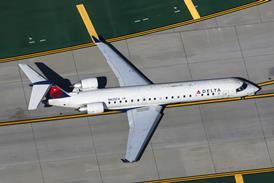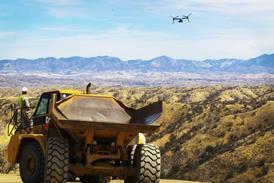Jet fuel spot prices continued to rise during August, spurred on by concerns over developments in Iraq.
The US majors' July growth in revenue passenger km was held back by lacklustre international growth. Domestic traffic rose by 8.6% with a 3.5 point improvement in load factors, which reached 73.2%. However, the international markets only managed a 1.6% RPK increase.
The Olympic Games in Atlanta and ValuJet's grounding helped Delta's domestic traffic to surge ahead by 18.4% with an 8.1 point load factor increase. TWA and Alaska Air also performed well domestically. American and Delta both suffered drops in international business.
For the European majors, international scheduled growth fell short of expectations at 4.8%, and load factors fell by 1.5 points to 74.6%. The freight picture was also disappointing, with only 3.2% growth overall and a drop within Europe and on the mid-Atlantic.
Qantas' full year profit was well ahead of 1994 but revenue fell short of predictions, while Air New Zealand's net profit fell slightly. Cathay Pacific's first half gain was largely the result of selling part of its Dragonair stake, while KLM's arose from selling Northwest preference shares. Elsewhere British Airways' profit climbed, Austrian's loss increased, Swissair improved and Lufthansa and SAS fell back.
The European majors are spearheading the capacity growth push between Europe and Asia, while Thai Airways is cutting capacity. American and United retain leadership between North and South America, but Continental, Aeromexico and Vasp plan significant capacity increases.
Remarks:
Outbound traffic grew strongly but inbound growth was weak and competition strong. The strong NZ dollar depressed revenue by NZ$100m (US$67m).
Alaska Air's RPKs jumped 16.8%, with load factors up 4.4 points and yield up 2.0%. Unit costs rose 3.7%, largely a result of higher fuel costs.
The parent of American Trans Air slipped into a loss due to rapid scheduled services expansion, especially within Florida.
Austrian Airlines' first half loss widened as passenger numbers rose 5% yet load factors declined 2.8 points to 55%.
Braathens' profits fell due to lower yields and higher fuel, leasing and maintenance costs. In June 1995, the carrier benefited from a strike at SAS.
BA's scheduled passenger yields jumped 6.6%, but cargo yields fell 4.5%. Unit costs rose 4.7% due to currency effects, fuel and employee costs.
Cathay's operating profit rose 12.5%. Net profit was boosted by a HK$541m (US$70m) gain from selling part of its Dragonair shareholding to CNAC.
Operating income halved to $47m as unit costs rose 4%. But KLM made a $105m book profit on the sale of Northwest preference shares.
Group pretax profit fell 37% in DM as traffic came in below expectations. Lufthansa blames the fire at Düsseldorf airport, price dumping and overcapacity.
Qantas' net profit rose 36.8% in Australian dollars but revenue was US$288m below expectations. The carrier cut costs by US$355m in the year.
SAS blamed the stronger Swedish krona for its lower net profit, saying that the resulting lower costs were offset by lower yields.
Swissair's operating profits rose 17.6% to $16.4m. However negative currency movements and lower profits on asset sales depressed the group result.
Source: Airline Business























